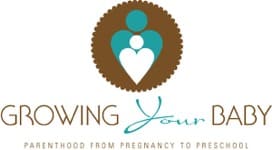For breastfeeding parents who rely on medications like prednisolone to manage chronic illness, the daily decision to take care of yourself can come with the fear of harming your baby. The truth is, most medications prescribed during breastfeeding haven’t been studied nearly enough—and that leaves moms and their doctors in a tough spot.
A new small study from Sweden is changing that.
This study is doing what most haven’t: measuring exactly how much prednisolone ends up in breast milk—and how much gets into a breastfeeding baby’s bloodstream. And it’s part of something even bigger: a push to create a new gold standard for how lactation research is done in real life.
Prednisolone is a steroid medication used to treat inflammatory and autoimmune conditions like rheumatoid arthritis, lupus, and inflammatory bowel disease. It’s essential for many women—but it’s also one of the drugs for which breastfeeding safety guidance is still fuzzy at best.
That’s not because scientists haven’t asked the question. It’s because the research just hasn’t been done well—or often—enough. Most studies looking at prednisolone and breastfeeding were conducted years ago with small groups of people and outdated lab techniques. Many relied only on measuring how much drug shows up in breast milk, then guessing how much might reach the baby.
But guesses don’t help when you’re choosing between your health and your baby’s.
Up to 70% of women take at least one medication during pregnancy or breastfeeding. Despite that, 95% of medications have no clear safety data for use during these critical times.
According to Dr. Mats G. Hansson, senior professor of biomedical ethics at Uppsala University and head of two ongoing clinical trials on lactation and medication use, this lack of evidence is more than an inconvenience—it’s an ethical concern.
“The lack of scientific evidence is an ethical problem for women and doctors, considering that around 70 percent of women need to use medicines sometime during their pregnancy,” says Hansson. “In many cases, women are recommended to refrain from breastfeeding or stop using their medicines. However, breastfeeding has benefits for both mother and child.”
When women are told to stop treatment or stop breastfeeding—based on little more than precaution—they’re forced into a lose-lose situation. And that has long-term consequences. Moms managing chronic illness may see their symptoms return or worsen. Babies may lose out on the known benefits of breastfeeding.
This new study is working to change that, one drop of milk at a time.
What sets this Swedish study apart isn’t just the drug it’s studying—it’s how the study is designed.
Until now, most lactation studies have relied on animal data and estimated how much of a drug a baby might get from breast milk using models called PB/PK (physiologically based pharmacokinetics). These methods are useful but don’t reflect real-world human variation.
This study is part of a much larger initiative called ConcePTION, a European collaboration aiming to build a reliable system for studying medication safety during pregnancy and breastfeeding.
The protocol in BMJ Open lays out a more rigorous and realistic approach:
- Sample actual human breast milk
- Sample blood from breastfeeding mothers
- Sample blood from their babies
- Use biobanking and ultra-sensitive lab techniques to analyze concentrations
The team is specifically looking at prednisolone, but also metformin, a medication used to treat type 2 diabetes. In both cases, researchers are setting a new bar for what lactation studies can look like.
So, how does it actually work?
The trial includes 30 breastfeeding women in Sweden who are already taking prednisolone as prescribed by their doctors. Here’s what their study visit looks like:
- The mom takes her usual prednisolone dose.
- One hour later, a blood sample is taken, and she pumps a full breast of milk.
- That milk is fed to her baby.
- Two hours later, a small blood sample is taken from the baby to see how much prednisolone (if any) reached their bloodstream.
All of these samples—milk, maternal blood, and infant blood—are carefully stored and analyzed in labs using high-precision technology. Researchers also measure the baby’s cortisol levels, since prednisolone can mimic or suppress this natural hormone.
The idea is to catch the drug at peak levels in both mother and baby, giving researchers the clearest picture possible of actual exposure—not just theoretical risk.
One of the most promising aspects of this study is its commitment to long-term learning. All samples collected are biobanked—stored for future studies with consent from participants and their partners.
That means this study could help answer not only questions about prednisolone today but also open the door to exploring other medications, long-term effects, and even genetic differences in how babies process drugs.
The breast milk and blood samples are stored as part of a larger European network of biobanks managed by BBMRI-ERIC, ensuring that this research isn’t happening in isolation. According to Hansson, this infrastructure ensures that future studies can build on what’s being learned now, rather than starting from scratch each time.
What Parents Should Know Now
While we wait for the full study results—expected by the end of 2025—there are some key takeaways for parents navigating these issues today:
- Ask about Relative Infant Dose (RID): This measures how much medication your baby might get through breast milk compared to your own dose. For prednisolone, early studies suggest that exposure is low, but actual numbers are still being confirmed.
- Don’t make decisions alone: Always speak with your healthcare provider before stopping medication or weaning. There may be safer options or timing strategies you haven’t considered.
- Know that research is finally catching up: Thanks to studies like this one, future parents may have access to clear, evidence-based guidelines for medications that today feel like a gray area.
Parenthood is full of hard choices. But choosing between your health and breastfeeding shouldn’t have to be one of them. The Swedish prednisolone study is more than just a data-gathering mission—it’s a lifeline for parents who need real answers.
By actually measuring drug levels in moms and babies—and creating a protocol that can be replicated—this research may finally bring clarity to one of the most confusing aspects of postpartum care.
And for the millions of women who rely on medications to feel well, that clarity can mean the difference between thriving and merely surviving.
Best Breast Pumps
This post includes affiliate links where we will receive a small percentage if you purchase through the link.







